Gustave Courbet
Paintings
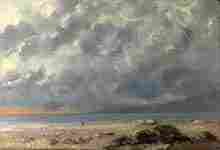
Beach Scene
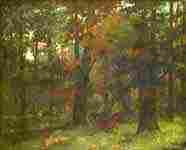
In the Forest
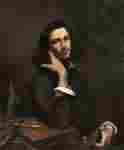
Self Portrait (L'Homme à la Ceinture de Cuir)
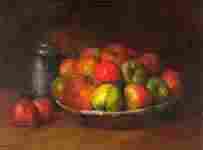
Still Life with Apples and a Pomegranate
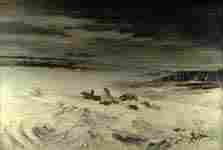
The Diligence in the Snow
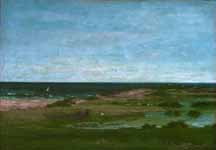
Coast Scene
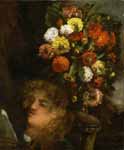
Head of a Woman and Flowers
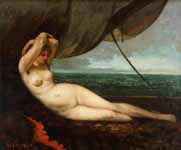
Nude Reclining by the Sea
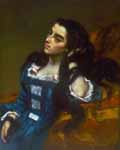
Spanish Woman
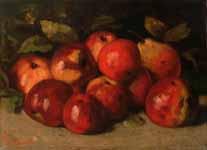
Still Life with Apples and a Pear
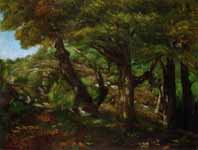
The Fringe of the Forest
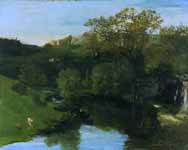
Valley
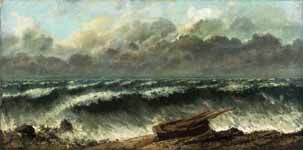
Waves
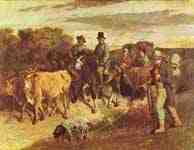
Farmers of Flagey on the Return From The Market
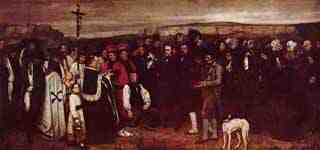
Burial at Ornans
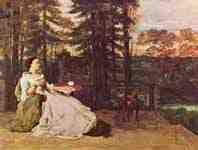
Lady on the terrace (Le dame de Francfort )
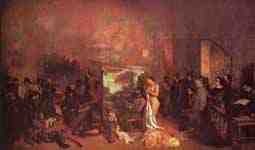
The artist's studio
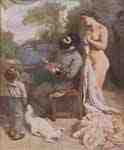
The artist's studio , detail
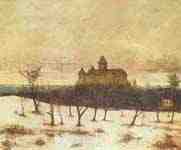
Lake Neuchatel
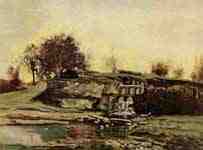
The quarry of Optevoz
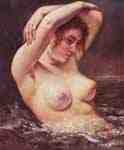
The bather
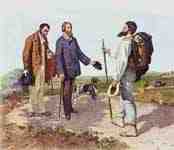
The Encounter ( Bonjour, Monsieur Courbet )
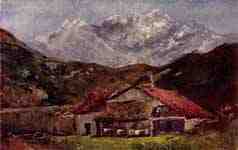
The Refuge
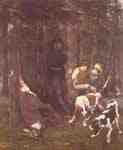
The booty (hunting with dogs )
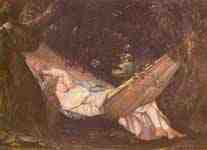
The Hammock
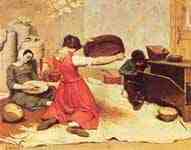
The Wheat Sifters
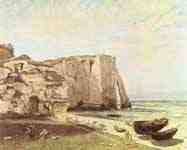
The coast of Etretat
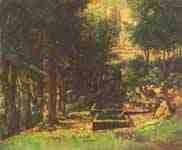
The source
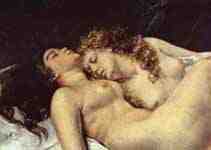
The sleepers ( sloth and lust ) , detail
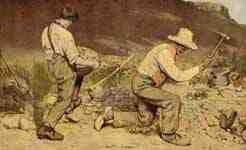
The Stone Breakers
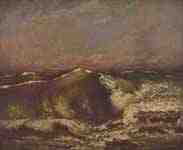
The Wave
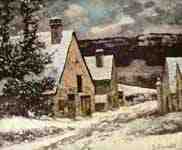
Of the village in winter
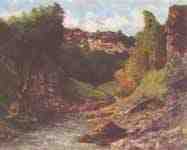
Rocky landscape
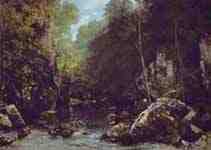
Rocky river valley
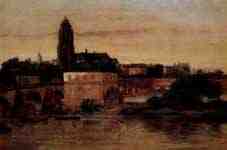
Frankfurt am Main, Old Main Bridge and Cologne Cathedral from the studio window Courbet in German mansion (Sachsenhausen)
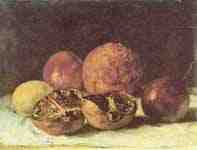
pomegranates
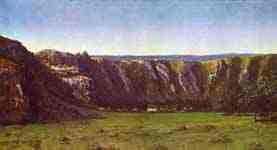
La roche de dix heures ( at Ornans )
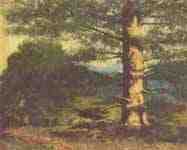
Landscape with tree
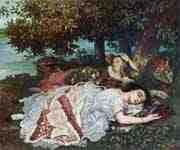
Girls on the Seine
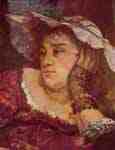
Girls on the Seine , detail
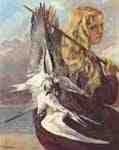
Girl with seagulls
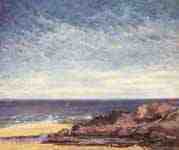
Sea coast in Normandy
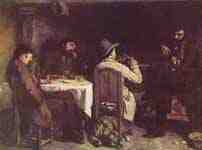
Afternoon in Ornans ( Une après- Dinée à Ornans )
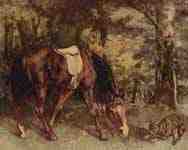
Horse in the forest
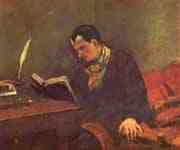
Portrait of Baudelaire
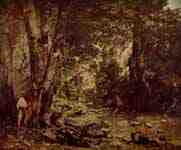
Roebuck in the forest
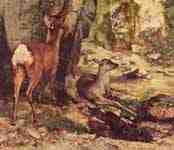
Rehgehege by the stream of Plaisir -Fontaine , detail
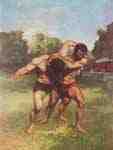
Wrestler
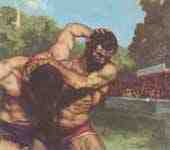
Wrestler , detail
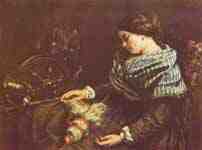
Sleeping Spinner
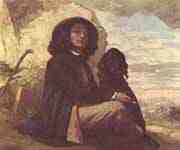
Self-portrait with black dog
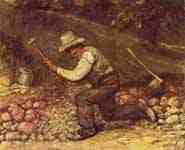
Quarryman
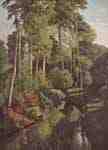
Forest brook with deer
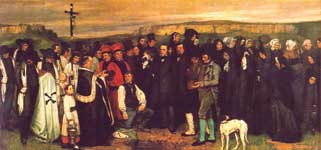
A Burial At Ornans
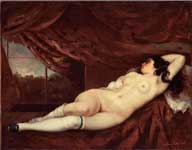
Nude Reclining Woman

Nude woman with a dog
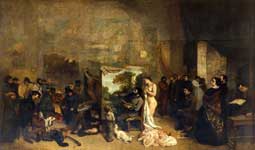
The Artist's Studio
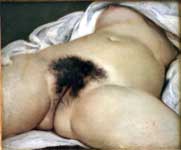
The Origin of the World

The Young Bather

Venus and Psyche
Drawings
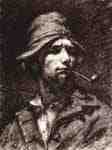
Self-Portrait ( Man with Pipe )
Buy Fine Art Prints | Greeting Cards | iPhone Cases
Jean Désiré Gustave Courbet (10 June 1819–31 December 1877) was a French painter who led the Realist movement in 19th-century French painting. The Realist movement bridged the Romantic movement (characterized by the paintings of Théodore Géricault and Eugène Delacroix), with the Barbizon School and the Impressionists. Courbet occupies an important place in 19th century French painting as an innovator and as an artist willing to make bold social commentary in his work.
“ I am fifty years old and I have always lived in freedom; let me end my life free; when I am dead let this be said of me: 'He belonged to no school, to no church, to no institution, to no academy, least of all to any régime except the régime of liberty.[1] ”
Realism
Courbet was a painter of figurative compositions, landscapes, seascapes, and still-lifes. He courted controversy by addressing social issues in his work, and by painting subjects that were considered vulgar: the rural bourgeoisie and peasantry, and the working conditions of the poor. His work belonged neither to the predominant Romantic nor Neoclassical schools. History painting, which the Paris Salon esteemed as a painter's highest calling, did not interest Courbet, who stated that "the artists of one century [are] basically incapable of reproducing the aspect of a past or future century ..."[2] Instead, he believed that the only possible source for a living art is the artist's own experience.[2]
His work, along with the work of Honoré Daumier and Jean-François Millet, became known as Realism. For Courbet realism dealt not with the perfection of line and form, but entailed spontaneous and rough handling of paint, suggesting direct observation by the artist while portraying the irregularities in nature. He depicted the harshness in life, and in so doing, challenged contemporary academic ideas of art.
Biography
Courbet was born in 1819 to Régis and Sylvie Oudot Courbet in Ornans (Doubs). Though a prosperous farming family, anti-monarchical feelings prevailed in the household. (His maternal grandfather fought in the French Revolution.) Courbet's sisters, Zoé, Zélie and Juliette, were his first models for drawing and painting. After moving to Paris he returned home to Ornans often to hunt, fish and find inspiration.[3]
He went to Paris in 1839, and worked at the studio of Steuben and Hesse. An independent spirit, he soon left, preferring to develop his own style by studying Spanish, Flemish and French painters and painting copies of their work.
Self-portrait (The Desperate Man), c. 1843–1845 (Private collection)
His first works were an Odalisque, suggested by the writing of Victor Hugo, and a Lélia, illustrating George Sand, but he soon abandoned literary influences for the study of real life. Among his paintings of the early 1840s are several self-portraits, Romantic in conception, in which the artist portrayed himself in various roles. These include the Self-Portrait with Black Dog (c. 1842–1844, accepted for exhibition at the Paris Salon of 1844), the theatrical Self-Portrait, also known as Desperate Man (c. 1843–45), Lovers in the Countryside (1844, Musée des Beaux-Arts, Lyon), The Sculptor (1845), The Wounded Man (1844–1854, Musée d'Orsay, Paris), The Cellist, Self-Portrait (1847, Nationalmuseum, Stockholm, shown at the Salon of 1848), and The Man with a Pipe (c. 1848–1849, Musée d'Orsay, Paris).
Trips to the Netherlands and Belgium in 1846–1847 strengthened Courbet's belief that painters should portray the life around them, as Rembrandt, Hals, and the other Dutch masters had done. By 1848, he had gained supporters among the younger critics, the Neo-romantics and Realists, notably Champfleury.[4] Courbet achieved greater recognition after the success of his painting After Dinner at Ornans at the Salon of 1849. This work, reminiscent of Chardin and Le Nain, earned Courbet a gold medal and was purchased by the state.[5] The gold medal meant that his works would no longer require jury approval for exhibition at the Salon[6] (an exemption Courbet enjoyed until 1857, when this rule was changed).[7]
In 1849 Courbet painted Stone-Breakers (destroyed in the British bombing of Dresden in 1945), which was admired by Proudhon as an icon of peasant life, and has been called "the first of his great works".[8] Courbet was inspired by a scene witnessed on the roadside, as he explained to Champfleury and the writer Francis Wey: "It is not often that one encounters so complete an expression of poverty and so, right then and there I got the idea for a painting. I told them to come to my studio the next morning."[8]
A Burial at Ornans
Main article: A Burial At Ornans
Gustave Courbet, A Burial at Ornans, 1849-1850, oil on canvas, 314 x 663 cm.(123.6 x 261 inches), Musee d'Orsay, Paris. Exhibition at the 1850–1851 Paris Salon created an "explosive reaction" and brought Courbet instant fame.[9]
The Salon of 1850–1851[10] found him triumphant with Stone-Breakers, the Peasants of Flagey, and A Burial at Ornans. The Burial, one of Courbet's most important works, records an event—the funeral of his grand uncle—which he witnessed in September 1848. People who had attended the funeral were used as models for the painting. Previously, models had been used as actors in historical narratives; here Courbet said that he "painted the very people who had been present at the interment, all the townspeople". The result is a realistic presentation of them, and of life, in Ornans.
The painting, which drew both praise and fierce denunciations from critics and the public, is an enormous work, measuring 10 by 22 feet (3.1 by 6.6 meters), depicting a prosaic ritual on a scale which previously would have been reserved for a religious or royal subject. According to art historian Sarah Faunce, "In Paris the Burial was judged as a work that had thrust itself into the grand tradition of history painting, like an upstart in dirty boots crashing a genteel party, and in terms of that tradition it was of course found wanting."[11] Then too, the painting lacks the sentimental rhetoric that was expected in a genre work: Courbet's mourners make no theatrical gestures of grief, and their faces seemed more caricatured than ennobled. The critics accused Courbet of a deliberate pursuit of ugliness.[11] Eventually the public grew more interested in the new Realist approach, and the lavish, decadent fantasy of Romanticism lost popularity. The artist well understood the importance of this painting; as Courbet said: "The Burial at Ornans was in reality the burial of Romanticism."
Courbet became a celebrity, and was spoken of as a genius, a "terrible socialist", and a "savage".[11] He actively encouraged the public perception of him as an unschooled peasant, while his ambition, his bold pronouncements to journalists, and his insistence on depicting his own life in his art gave him a reputation for unbridled vanity.[11] Courbet associated his ideas of realism in art with anarchism, and, having gained an audience, he promoted democratic and socialist ideas by writing politically motivated essays and dissertations. His familiar visage was the object of frequent caricature in the popular French press.
To a friend in 1850 he wrote,
“ ...in our so very civilized society it is necessary for me to live the life of a savage. I must be free even of governments. The people have my sympathies, I must address myself to them directly.[12] ”
During the 1850s Courbet painted numerous other figurative works using common folk and friends as his subjects, such as Village Damsels (1852), the Wrestlers (1853), Bathers (1853), The Sleeping Spinner (1853), and The Wheat Sifters (1854).
[edit] The Artist's Studio
The Artist's Studio (L'Atelier du peintre): A Real Allegory of a Seven Year Phase in my Artistic and Moral Life, 1855, 359 × 598 cm (141.33 × 235.43 in), oil on canvas, Musée d'Orsay, Paris
In 1855, Courbet submitted fourteen paintings for exhibition at the Exposition Universelle. Three were rejected for lack of space, including A Burial at Ornans and his other monumental canvas The Artist's Studio.[13] Refusing to be denied, Courbet took matters into his own hands: he displayed forty of his paintings, including The Artist's Studio, in his own adjacent gallery called The Pavilion of Realism, which was a temporary structure he erected next door to the official Salon like Exposition Universelle.[13] Although artists like Eugène Delacroix were ardent champions of his effort, the public came mostly out of curiosity and to deride him. Attendance and sales were disappointing,[14] but Courbet's status as a hero to the French avant-garde became assured. He was admired by the American James McNeill Whistler, and he became an inspiration to the younger generation of French artists including Édouard Manet and the Impressionist painters many of whom were still in art school at the time. The painting itself was recognized as a masterpiece by Delacroix, Baudelaire, and Champfleury. It is an allegory of his life as a painter, seen as an heroic venture, in which he is flanked by friends and admirers on the right, and challenges and opposition to the left. Friends on the right include the art critics Champfleury, and Charles Baudelaire, and art collector Alfred Bruyas. On the left are figures (a priest, a prostitute, a grave digger, a merchant, and others) who represent what Courbet described in a letter to Champfleury as "the other world of trivial life, the people, misery, poverty, wealth, the exploited and the exploiters, the people who live off death."[15]
Notoriety
In the Salon of 1857 Courbet showed six paintings. These included the scandalous Young Ladies on the Banks of the Seine (Summer), depicting two prostitutes under a tree, as well as the first of many hunting scenes Courbet was to paint during the remainder of his life: Hind at Bay in the Snow and The Quarry.[7] By exhibiting sensational works alongside hunting scenes of the sort that had brought popular success to the English painter Edwin Landseer, Courbet guaranteed himself "both notoriety and sales".[16] During the 1860s, Courbet painted a series of increasingly erotic works such as Femme nue couchée. This culminated in The Origin of the World (L'Origine du monde) (1866), which depicts female genitalia and was not publicly exhibited until 1988,[17] and Sleep (1866), featuring two women in bed. The latter painting became the subject of a police report when it was exhibited by a picture dealer in 1872.[18]
By the 1870s Courbet had become well established as one of the leading artists in France. On 14 April 1870, Courbet established a "Federation of Artists" (Fédération des artistes) for the free and uncensored expansion of art. The group's members included André Gill, Honoré Daumier, Jean-Baptiste Camille Corot, Eugène Pottier, Jules Dalou, and Édouard Manet.
Le Sommeil (Sleep), 1866, Petit Palais, Musée des Beaux-Arts de la Ville de Paris
Until about 1861, Napoléon's regime exhibited authoritarian characteristics, using press censorship to prevent the spread of opposition, manipulating elections, and depriving the Parliament of the right to free debate or any real power. In the decade of the 1860s, however, Napoléon III made more concessions to placate his liberal opponents. This change began by allowing free debates in Parliament and public reports of parliamentary debates, continued with the relaxation of press censorship, and culminated in the appointment of the Liberal Émile Ollivier, previously a leader of the opposition to Napoléon's regime, as (effectively) Prime Minister in 1870. As a sign of appeasement to the Liberals who admired Courbet, Napoleon III nominated him to the Legion of Honour in 1870. His refusal of the cross of the Legion of Honour offered to him by Napoleon III angered those in power but made him immensely popular with those who opposed the current regime, and in 1871 under the revolutionary Paris Commune he was placed in charge of all the Paris art museums and saved them from looting mobs. However when the power shifted back to the old guard Courbet found himself in an untenable political position.
Exile and death
Gustave Courbet taking down a Morris column, caricature published by the Père Duchêne illustré
During the Paris Commune in 1871, Courbet proposed that the Vendôme column be disassembled and re-erected in the Hôtel des Invalides. Courbet argued that:
“ Inasmuch as the Vendôme column is a monument devoid of all artistic value, tending to perpetuate by its expression the ideas of war and conquest of the past imperial dynasty, which are reproved by a republican nation's sentiment, citizen Courbet expresses the wish that the National Defense government will authorise him to disassemble this column."[19] ”
This project was not adopted, but, on April 12, 1871, the dismantling of the imperial symbol was voted, and the column taken down on May 8, with no intentions of rebuilding it. The bronze plates were preserved.
For his insistence in executing the Communal decree for the destruction of the Vendôme Column, he was designated as responsible for the act and accordingly sentenced on 2 September 1871 by a Versailles court martial to six months in prison and a fine of 500 francs. During his incarceration, Courbet painted several still-life compositions. In 1872 he depicted his imprisonment in the Self-Portrait at Ste.-Pélagie.
After the assault on the Paris Commune by Adolphe Thiers, head of the new provisional national government, the decision was taken to rebuild the column with its statue of Napoléon. In 1873, the newly elected president Mac-Mahon wanted to resurrect the Column, On his own previous proposition, Gustave Courbet was singled out and condemned to pay the expenses. Unable to pay, Courbet went into a self-imposed exile in Switzerland. He took refuge in Switzerland to avoid bankruptcy. The next years he participated quite actively in some regional and national exhibitions. Observed by the intelligence service he enjoyed in the small Swiss art world the dubious reputation as head of the “realist school” and inspired younger artists like Auguste Baud-Bovy and Ferdinand Hodler.[20]
From this period date several paintings of trout, "hooked and bleeding from the gills",[21] that have been interpreted as allegorical self-portraits of the exiled artist.[21]
On 4 May 1877, the estimate of the costs was finally established: 323,091 fr 68 cent. Courbet was allowed to pay the fine in yearly installments of 10,000 francs for the next 33 years, until his 91st birthday. On 31 December 1877, a day before the payment of the first installment was due,[22] Courbet died, age 58, in La Tour-de-Peilz, Switzerland, of a liver disease aggravated by heavy drinking.
Influence
Claude Monet, Le dejeuner sur l'herbe, (right section), with Gustave Courbet, 1865-1866, Musée d'Orsay, Paris
Courbet was admired by many younger artists. Claude Monet included a portrait of Courbet in his own version of Le dejeuner sur l'herbe from 1865-1866. Courbet's particular kind of realism influenced many artists to follow, notably among them the German painters of the Leibl circle,[23] James McNeill Whistler, and Paul Cézanne. Courbet's influence can also be seen in the work of Edward Hopper, whose "Bridge in Paris" (1906) and "Approaching a City" (1946) have been described as Freudian echoes of Courbet's "The Source of the Loue" and "The Origin of the World." [24]
Pupils
* Henri Fantin-Latour
* Hector Hanoteau
* Olaf Isaachsen
Notable exhibitions
An exhibition of his works was held in 1882 at the École des Beaux-Arts.
A major exhibition of Courbet's work, "The Born Rebel Artist", opened in 2007 at the Grand Palais, and traveled to the Musée Fabre (Montpellier, France) and the Metropolitan Museum of Art (New York City) during 2008.[25][26]
'Bonjour, Monsieur Courbet!': The Bruyas Collection from the Musée Fabre,' 2004 exhibition at the Sterling and Francine Clark Art Institute of Courbet's works from the collection of Alfred Bruyas, now at the Musée Fabre.
Notes
1. ^ Courbet, Gustave: Letters of Gustave Courbet, 1992, University of Chicago Press, Translated by Petra Ten-Doesschate Chu, ISBN 0226116530. (Google Books)
2. ^ a b Faunce, Sarah; Courbet, Gustave; and Nochlin, Linda 1988, p. 7.
3. ^ Avis Berman, "Larger than Life", Smithsonian Magazine, April 2008.
4. ^ Faunce, Sarah; Courbet, Gustave; and Nochlin, Linda 1988, p. 83.
5. ^ Masanès, Fabrice 2006, pp. 31–32.
6. ^ Masanès, Fabrice 2006, p. 30.
7. ^ a b Masanès, Fabrice 2006, p. 55.
8. ^ a b Masanès, Fabrice 2006, p. 31.
9. ^ Pbs.org. Gustave Courbet's A Burial at Ornans
10. ^ Political turmoil delayed the opening of the Salon of 1850 until 30 December 1850. Faunce, Sarah; Courbet, Gustave; and Nochlin, Linda 1988, p. 2.
11. ^ a b c d Faunce, Sarah; Courbet, Gustave; and Nochlin, Linda 1988, p. 4.
12. ^ Courbet, Gustave: artchive.com citing Perl, Jed: Gallery Going: Four Seasons in the Art World, 1991, Harcourt, ISBN 978-0151342600.
13. ^ a b Masanès, Fabrice 2006, p. 52.
14. ^ Faunce, Sarah; Courbet, Gustave; and Nochlin, Linda 1988, p. 84.
15. ^ Masanès, Fabrice 2006, p. 48.
16. ^ Schwabsky, Barry 2008, p. 30.
17. ^ Schwabsky, Barry 2008, p. 34.
18. ^ Faunce, Sarah; Courbet, Gustave; and Nochlin, Linda 1988, p. 176.
19. ^ "Attendu que la colonne Vendôme est un monument dénué de toute valeur artistique, tendant à perpétuer par son expression les idées de guerre et de conquête qui étaient dans la dynastie impériale, mais que réprouve le sentiment d’une nation républicaine, [le citoyen Courbet] émet le vœu que le gouvernement de la Défense nationale veuille bien l’autoriser à déboulonner cette colonne. [1],
20. ^ Fischer, Matthias 2009, pp. 57–80.
21. ^ a b Danto, Arthur C. "Courbet", The Nation, January 23, 1989, p. 100.
22. ^ Noël, Bernard 1978
23. ^ Forster-Hahn, Françoise, et al. 2001, p. 155.
24. ^ Wells, Walter, Silent Theater: The Art of Edward Hopper, London/New York: Phaidon, 2007.
25. ^ Golding, John, "The Born Rebel Artist", The New York Review of Books, v.55, n.2 (Feb. 14, 2008) (reviewing the exhibition catalog).
26. ^ Smith, Roberta, "Art Review: Gustave Courbet -- Seductive Rebel Who Kept It Real", New York Times, Feb. 29, 2008.
References
* Champfleury, Les Grandes Figures d’hier et d’aujourd’hui (Paris, 1861)
* Chu, Petra ten Doesschate. Courbet in Perspective. (Prentice Hall, 1977) ASIN B000OIFL3E
* Chu, Petra ten Doesschate and Gustave Courbet. Letters of Gustave Courbet. (Chicago: Univ Chicago Press, 1992) ISBN 0226116530
* Chu, Petra ten Doesschate. The Most Arrogant Man in France: Gustave Courbet and the Nineteenth-Century Media Culture.(Princeton, NJ: Princeton University Press, 2007) ISBN 0691126798
* Clark, Timothy J., Image of the People: Gustave Courbet and the 1848 Revolution, (Berkeley: University of California Press, 1999); (Originally published 1973. Based on his doctoral dissertation along with The Absolute Bourgeois: Artists and Politics in France, 1848-1851), 208pp. ISBN 978-0520217454. (Considered the definitive treatment of Courbet's politics and painting in 1848, and a foundational text of Marxist art history).
* Danto, Arthur (January 23, 1989). "Courbet". The Nation: 97–100.
* Faunce, Sarah, Gustave Courbet, and Linda Nochlin. Courbet Reconsidered. ([Brooklyn, N.Y.]: Brooklyn Museum, 1988) ISBN 0300042981
* Fischer, Matthias, Der junge Hodler. Eine Künstlerkarriere 1872-1897, Wädenswil: Nimbus, 2009. ISBN 978-3-907142-30-1
* Forster-Hahn, Françoise, et al., Spirit of an Age: Nineteenth-Century Paintings From the Nationalgalerie, Berlin (London: National Gallery Company, 2001) ISBN 1-85709-981-8
* Hutchinson, Mark, "The history of 'The Origin of the World'", Times Literary Supplement, Aug. 8, 2007.
* Lindsay, Jack. Gustave Courbet his life and art. Publ. Jupiter Books (London) Limited 1977.
* Lemonnier, C, Les Peintres de la Vie (Paris, 1888).
* Mantz, "G. Courbet," Gaz. des beaux-arts (Paris, 1878)
* Masanès, Fabrice, Gustave Courbet (Cologne: Taschen, 2006) ISBN 3822856835
* Nochlin, Linda, Courbet, (London: Thames & Hudson, 2007) ISBN 978-0-500-28676-0
* Nochlin, Linda, Realism: Style and Civilization (New York: Penguin, 1972).
* Noël, Bernard, Dictionnaire de la Commune (Paris: Champs Flammarion, 1978)
* Schwabsky, Barry (March 24, 2008). "Daring Intransigence". The Nation: 28–34.
* Zola, Émile, Mes Haines (Paris, 1879)
* This article incorporates text from a publication now in the public domain: Chisholm, Hugh, ed (1911). Encyclopædia Britannica (Eleventh ed.). Cambridge University Press.
Further reading
Monographs on the art and life of Courbet have been written by Estignard (Paris, 1874), D'Ideville, (Paris, 1878), Silvestre in Les artistes français, (Paris, 1878), Isham in Van Dyke's Modern French Masters (New York, 1896), Meier-Graefe, Corot and Courbet, (Leipzig, 1905), Cazier (Paris, 1906), Riat, (Paris, 1906), Muther, (Berlin, 1906), Robin, (Paris, 1909), Benedite, (Paris, 1911) and Lazár Béla (Paris, 1911). Consult also Muther History of Modern Painting, volume ii (London, 1896, 1907); Patoux, "Courbet" in Les artistes célèbres and La vérité sur Courbet (Paris, 1879); Le Men, Courbet (New York, 2008).
* Savatier, Thierry, El origen del mundo. Historia de un cuadro de Gustave Courbet. Ediciones TREA (Gijón, 2009) ISBN 9788497044714
* Bond, Anthony, "Embodying the Real", Body. The Art Gallery of New South Wales (1997).
* Faunce, Sara, "Feminist Inspite of Himself", Body. The Art Gallery of New South Wales (1997).
Retrieved from "http://en.wikipedia.org/ ", Text is available under the
Creative Commons Attribution-ShareAlike License
